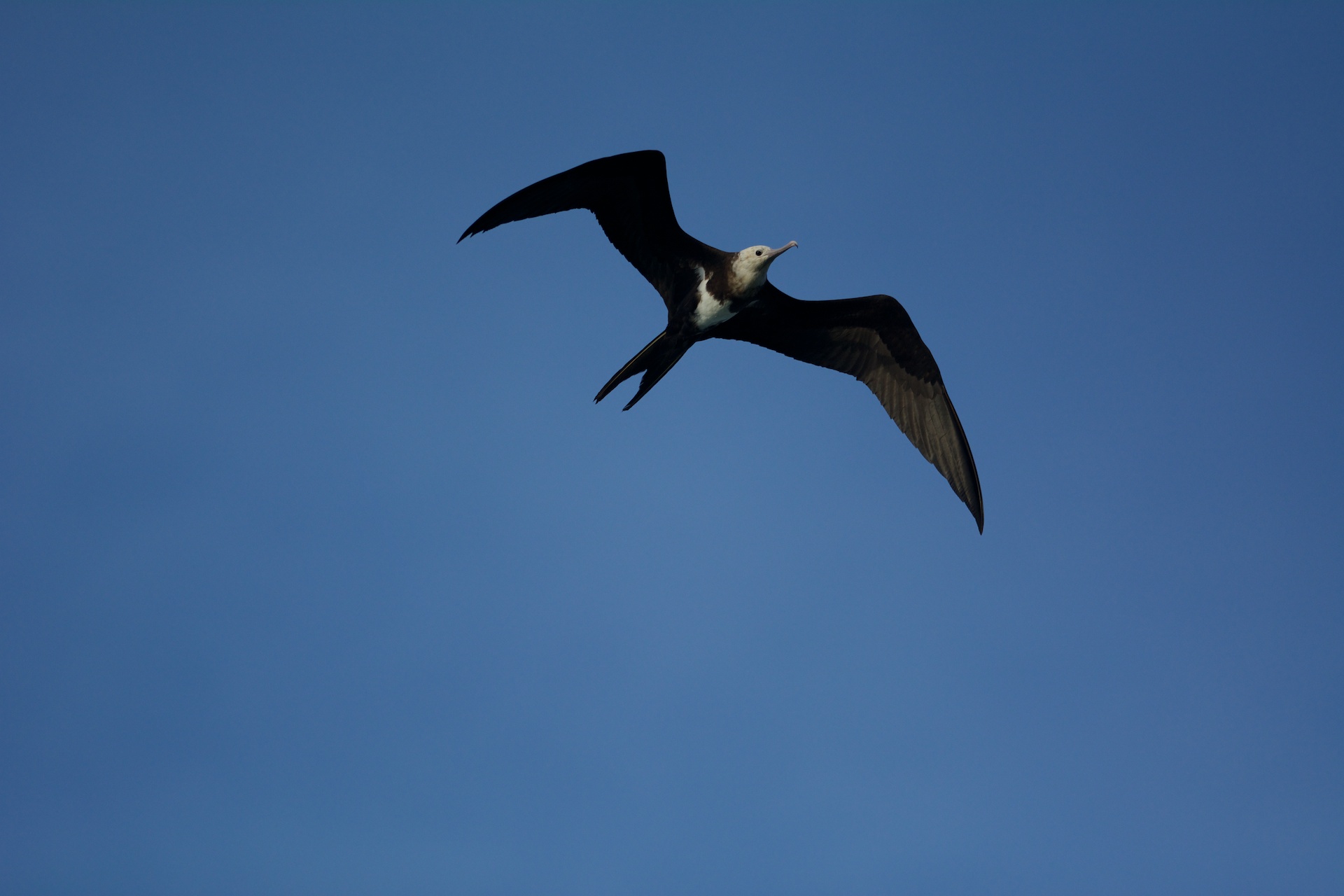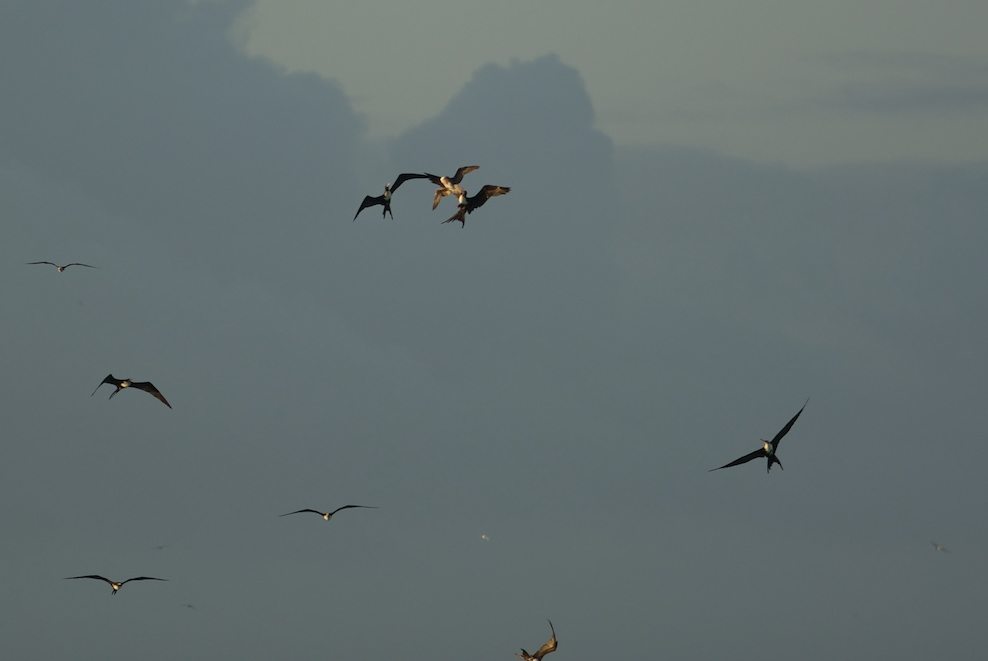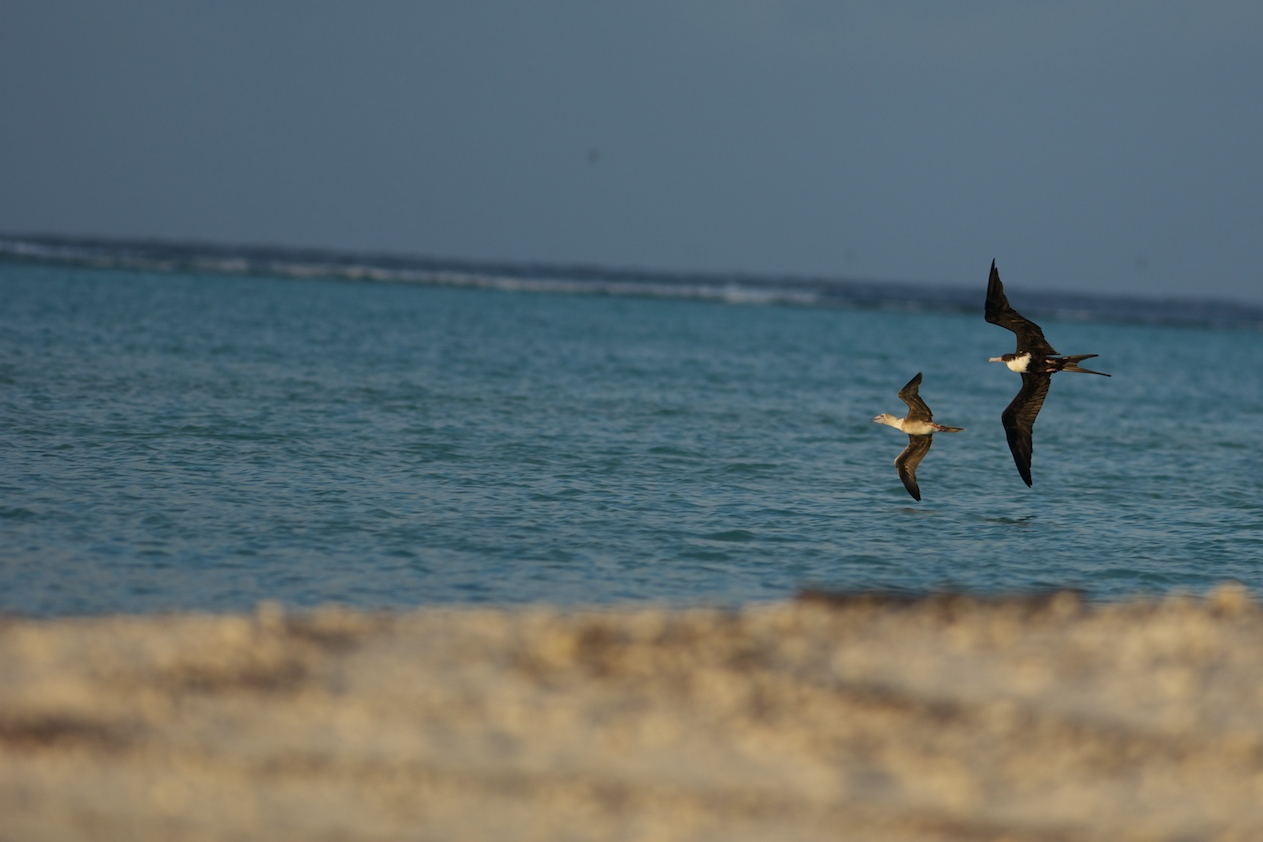Aerial Piracy
If there were a Guinness Book of World Records for birds, the frigatebird would be in it for having the largest wing area-to-body weight ratio of any species. Its wingspan often exceeds two metres in length and it weighs less than 1.6 kilograms, which enables it to soar continuously, only rarely flapping its wings. A frigatebird’s bones are very light – only 5% of its total body weight – as they are filled with air. Its name derives from the name French mariners gave to the bird: la frégate, meaning ‘fast warship’.
It is not the most striking bird to look at, but what the frigatebird lacks in beauty it makes up for in skill. It can track small, turbulent updrafts and ride them high into the sky – as high as 2.5 kilometres – and thus expends minimal energy when searching for food. While foraging, these birds move slowly (averaging 16 kilometres per hour) and, although continuously climbing and descending, they fly at an average altitude of 180 metres.
Frigatebirds feed only during the day, with peaks in the early morning and late afternoon, and drop to the surface on average six times a day. Although they can forage over extensive distances – up to 600 kilometres from land – their inability to land on water means they spend these trips entirely in flight and only rest at terrestrial sites. They have so little waterproofing on their feathers that they would drown in minutes if they landed in water. Instead, they skim their prey off the surface and therefore rely on sub-surface predators such as tunas or cetaceans to force small fish and squid to the surface so that they can capture them. Frigatebirds are long-lived – the oldest recorded was 44 years old – and they become sexually mature at the age of 8–10 years.
On D’Arros Island and St Joseph Atoll both the great frigatebird Fregata minor and the lesser frigatebird F. ariel occur. They can be found in tall casuarina trees, choosing their roosting site based on the seasonal wind direction. Their unwebbed feet are too small for walking on land, so they always perch.

© Photo by Rainer von Brandis | Save Our Seas Foundation
Frigatebirds also have a dark side: they are kleptoparasites, stealing food from birds of other species in behaviour that is also referred to as ‘piracy’, ‘food parasitism’, ‘pilfering’ or ‘robbery’. Most of their food, however, is taken from the ocean and kleptoparasitism is generally thought to supplement their diet. At dusk you can sit on the beach and watch their amazing aerial acrobatics, like fighter jets in an epic dog fight, as they harass, dive bomb and chase other birds. Manoeuvring at breakneck speed, they attempt to make their target regurgitate its catch so that they can scoop it up. The unfortunate target species include red-footed booby Sula sula, wedge-tailed shearwater Puffinus pacificus and fairy tern Gygis alba.



